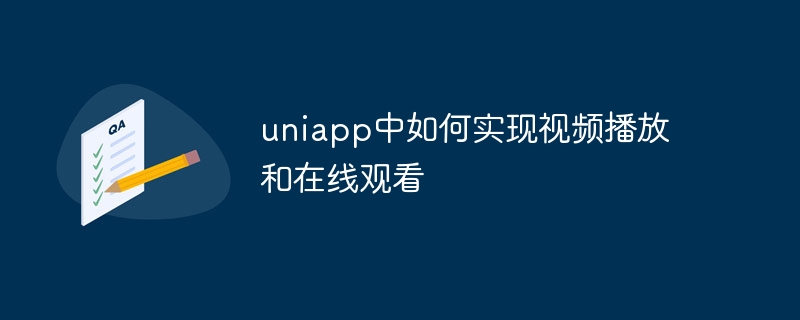Home >Web Front-end >uni-app >How to implement video playback and online viewing in uniapp
How to implement video playback and online viewing in uniapp
- PHPzOriginal
- 2023-10-18 11:48:242077browse

uniapp is a cross-platform application framework developed based on Vue.js, which can be used to develop applications that are suitable for multiple platforms at the same time. It is very easy to implement video playback and online viewing in uniapp, just use the built-in Video component. The following will introduce in detail how to implement video playback and online viewing in uniapp, and give specific code examples.
- Introducing the Video component
In the uniapp page, you first need to introduce the Video component. You can import the Video component in the vue file of the page, as shown below:
<template>
<view>
<video :src="videoUrl"></video>
</view>
</template>
<script>
export default {
data() {
return {
videoUrl: 'http://www.example.com/video.mp4' // 视频的URL地址
}
}
}
</script>- Bind video URL
In the above code, we define a videoUrl attribute to save the URL address of the video. You can save the URL address of the video in this attribute according to actual needs. This URL address can be a link to an online video or the path to a local video. - Play video
In the above code, we use the Video component and bind the videoUrl attribute to the src attribute of the Video component through the v-bind instruction to implement the video playback function. In uniapp, the Video component has built-in some basic video playback control functions, such as play, pause, progress bar, etc., which can be used directly on the page. - Watch online
To watch videos online, you can directly use the link of the online video as the value of the videoUrl attribute. In uniapp, the Video component supports playing most video formats, including MP4, H.264, WebM, etc.
If you want to watch videos from the back-end API online, after obtaining the URL address of the video, dynamically bind it to the videoUrl attribute. The specific implementation method can be adjusted according to your own project needs.
In summary, through the above steps, we can implement video playback and online viewing functions in uniapp. Just use the built-in Video component and dynamically bind the URL address of the video. In this way, videos in various formats can be played in applications developed by uniapp. Hope this article can be helpful to you!
The above is the detailed content of How to implement video playback and online viewing in uniapp. For more information, please follow other related articles on the PHP Chinese website!

